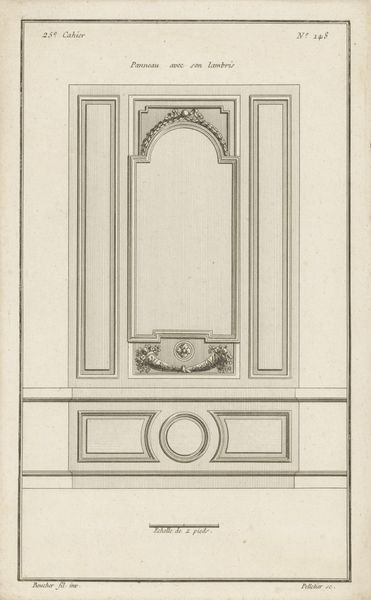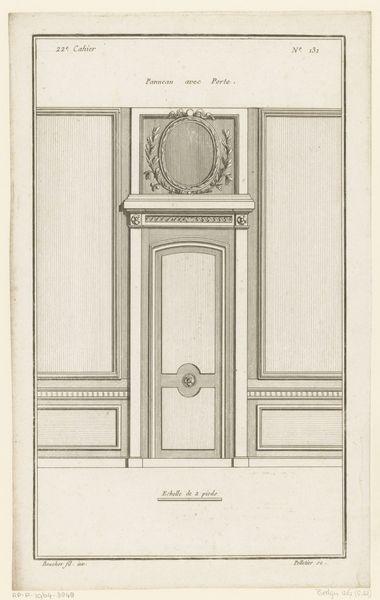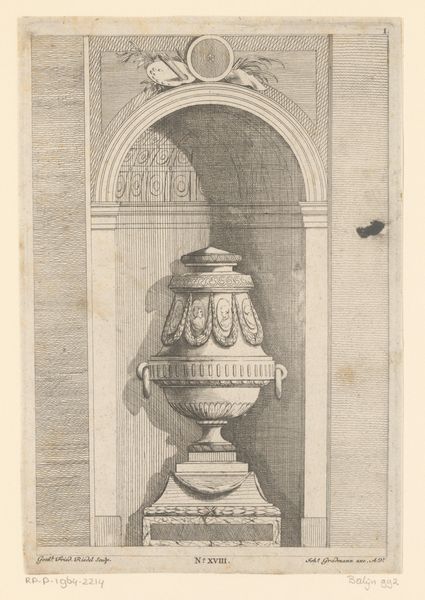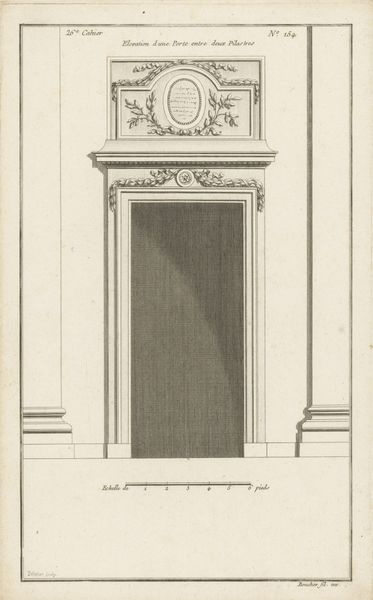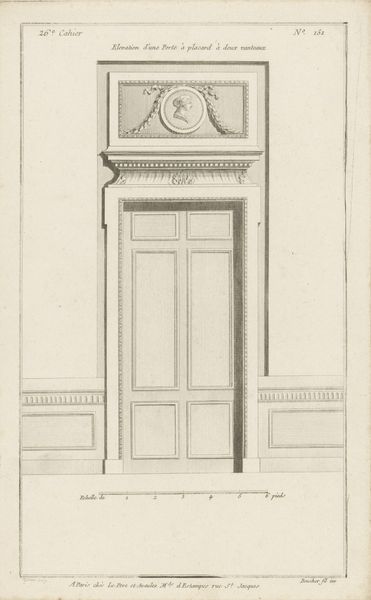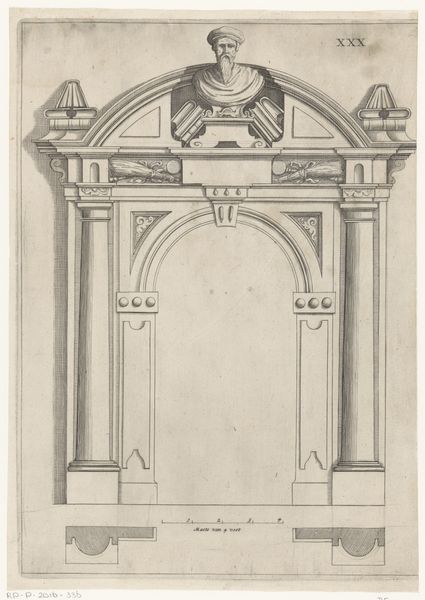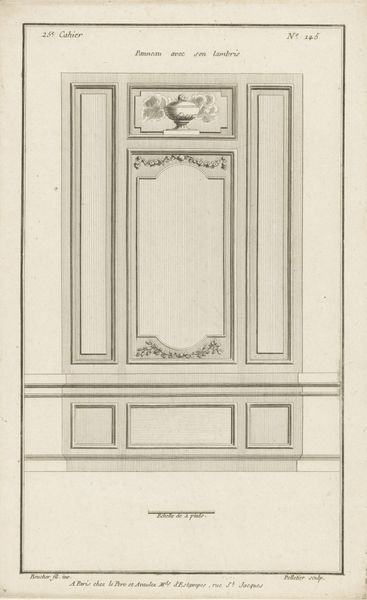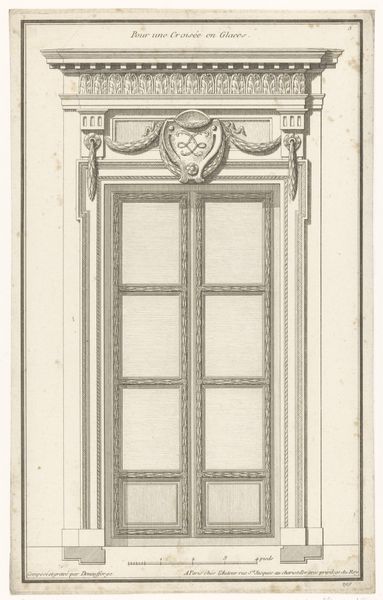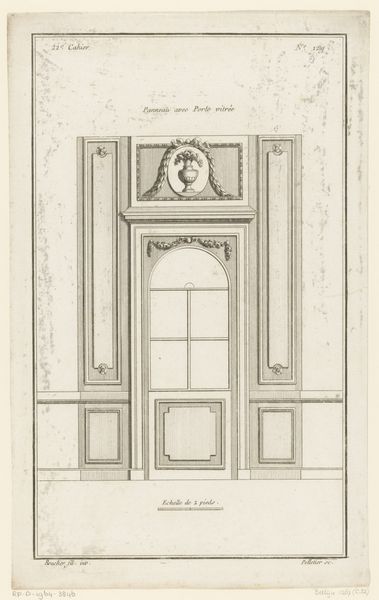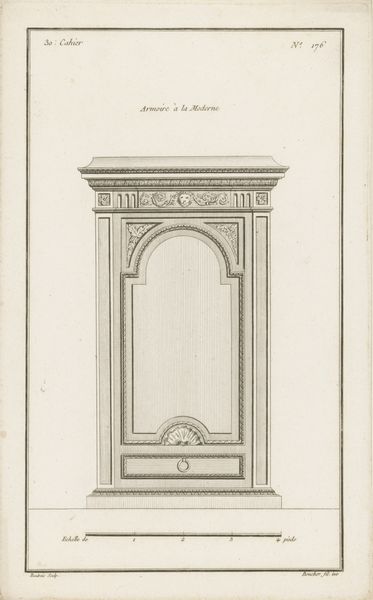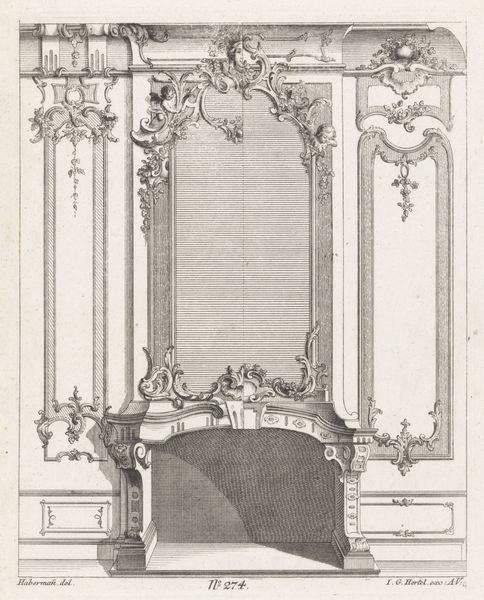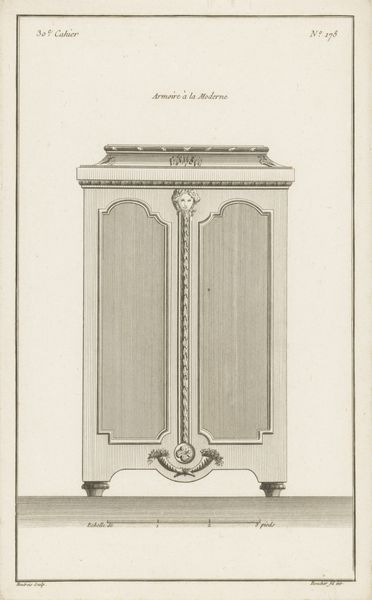
Dimensions: height 325 mm, width 203 mm
Copyright: Rijks Museum: Open Domain
Curator: This drawing by Jean Pelletier, dating from the late 1770s, presents a design for a door and panel arrangement, characteristic of the Rococo period. Editor: My initial reaction is that it appears meticulously structured, but possesses a certain airy grace through its delicate lines. It gives off a sense of poised elegance. Curator: Elegant, yes, but also carefully controlled. Look at how the decorative vase motif sits atop the central panel—a deliberate display of wealth and cultivated taste during a time of immense social upheaval. Editor: I am drawn to that very vase. Floral arrangements in art are so often tied to ideas of transience and the ephemeral nature of beauty and life, the memento mori tradition. How do you see that playing out here? Curator: In this context, I think the vase is less about vanitas and more about projecting power. Floral displays were status symbols, signs of affluence that set the aristocracy apart from the masses, so it emphasizes a certain class identity. The placement of the design suggests to me Pelletier had a clear commission with strict rules to follow, something dictated by social requirements more than artistic expression. Editor: And what about the empty panel at the center? It resembles a looking glass to me. A chance for reflection and perhaps vanity. Or is it a window through to another world? What would have inhabited that void once this was realized, I wonder. Curator: More practically, the blank center shows the opportunity to add other details. We might consider who owned these designs, and who were they meant for? It gives us insight into the ways visual language was used to uphold rigid class divisions on the eve of revolution. Editor: I find that it's helpful when analyzing an image such as this to step back, appreciate the craftmanship, but then to interrogate who has access to it, then and now. These designs speak volumes. Curator: Indeed. Considering Pelletier's design choices helps us dissect the complex power dynamics at play, unveiling how objects reinforce or challenge prevailing ideologies of its era.
Comments
No comments
Be the first to comment and join the conversation on the ultimate creative platform.
